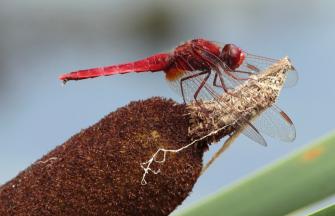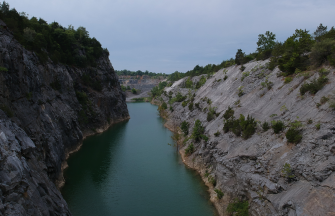
BIODIVERSITY
There are three phases in a quarry’s life:
- Phase 1 – The quarry produces stone.
- Phase 2 - The quarry is often used to decant water in a closed loop.
- Phase 3 - Once the industrial activity is over, the quarry becomes a prime refuge for fish, amphibians, birds, dragonflies and damselflies that gradually colonize the pit.
Carmeuse evaluates, incorporates and manages restoration plans and biodiversity development programs. We are utilizing or remediating the land consumed by our production facilities in order to contribute to the preservation of natural upland or wetland ecosystems for the benefit of plants and wildlife that thrive there.

QUARRY MANAGEMENT
For many years now, Carmeuse has demonstrated a responsible approach in the area of land management and the restoration of quarries. Recognized as a company that preserves nature, we even develop biodiversity.
We use and transform natural resources - limestone and water - in the most efficient way in order to maximize their functional purpose and minimize waste generation. Carmeuse aims at using 100 % of what has been extracted from the earth and leaving 0% waste behind.

GHG Emissions
Carmeuse is actively engaged in pursuing technologies and practices that will reduce its GHG emissions.
In 2019, Carmeuse completed a detailed analysis of our greenhouse gas footprint. This serves as a starting point or baseline as we strive to reduce our GHG emissions.
Carmeuse has established a GHG team to focus our efforts on the reduction of GHG emissions and a few examples of these efforts are the increased use of alternative fuels and new technologies to reduce, capture and even reuse CO2 emissions.


